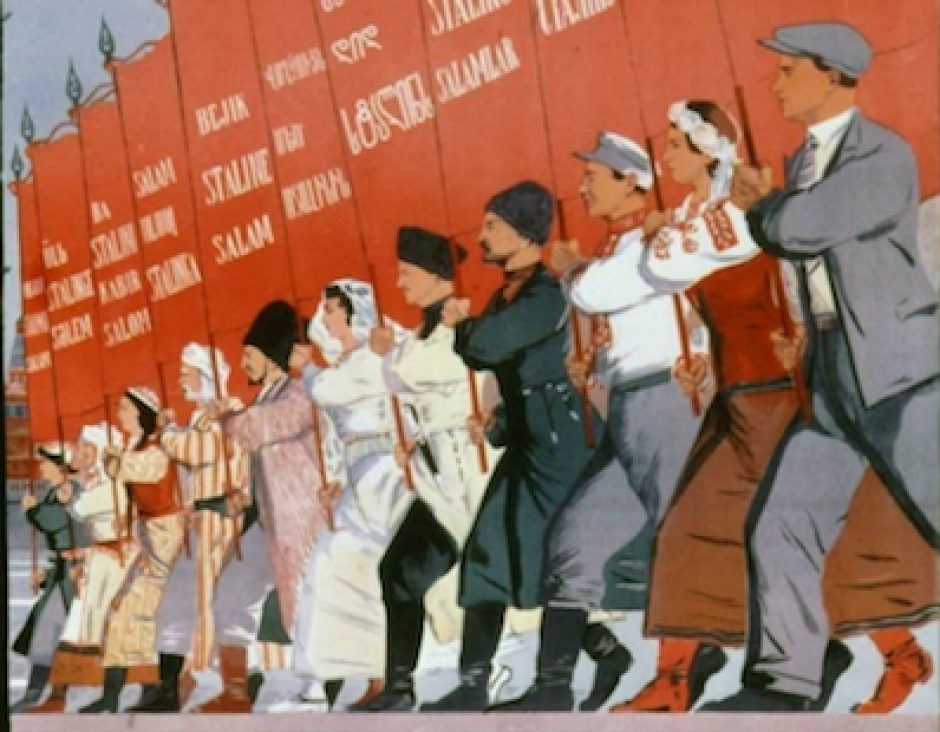The Institute of Anthropology and Ethnography, part of the Academy of Sciences of the USSR was founded in 1933, borne out of the merger of a restructured Peter the Great Museum of Anthropology and Ethnography, and the Institute for the Study of the Peoples of the USSR.
The base of this Institute is the old Museum of Anthropology and Ethnography. This museum has its roots in the reign of Peter I, being known as the Kunstkamera in 1714. Kunstkamera is a Russification of the German Kunstkammer, which translates to “cabinet of arts.” It describes a collection of marvels, curiosities, and wonders of human achievement across the globe and throughout the ages. You could consider it a museum for the truly remarkable artifacts. Its early beginnings saw rather instead Peter I and some researchers’ personal collections of farflung biological specimens gathered over the years. Soon, it consisted too of metallic and scientific works and instruments, and starting from 1718, the Kunstkamera was open to the public.
In 1724, Peter established the Academy of Sciences and Arts with the aim of training, centralizing and publishing scientific advancement. By the 1800s, the collection had expanded considerably, necessitating its splitting into several specialized branches. 1879 was the year that the Peter the Great Museum of Anthropology and Ethnography was created, a consolidation of two branches named the Museum of Ethnography and the Museum of Anatomy. This museum, until its own consolidation recently, was the stage for discoveries by researchers and explorers such as Nikolay N. Miklukho-Maclay, famous for his travels in New Guinea, documenting peoples there who prior had no contact with Europeans. And it served as a record of knowledge up till the present day.

Peter the Great Museum of Anthropology and Ethnography
Meanwhile, the Institute for the Study of the Peoples of the USSR, founded in 1930, was working to gather ethnographic information in Siberia, Central Asia, and elsewhere, in part to fulfill the the Commission for Study of Tribal Structure of the Population of Russia and Contiguous States. Seeing the two institutions as aligned in purpose, a merger between it and the Peter the Great Museum was effected a mere three years later. The Institute of Anthropology and Ethnography was thus founded.

Institute of Anthropology and Ethnography
The Institute has the purpose of studying peoples, largely in the East, identifying their cultural influences and collecting cultural artifacts. Ethnographical work is related to projects by the Soviet government to modernize and unify the perceived backwards peoples of the East under the ideology of Communism.
The institution was founded on the backdrop of increasing interest on the part of the government to categorize the peoples via census, establish learning centers for the peoples in Russia and in their homelands, and transition them to socialist modes of production. The census of 1926 had met with unexpected challenges, largely due to lack of recognition by the nationalities as themselves as nationalities—misidentifying themselves, so saw the Soviets, as people from a particular locality, or of a particular religion. Appropriate identities had to be formed on the spot, making for sufficient though unsatisfactory data. It was necessary to conduct the next censuses in a more organized way, and for that, ethnography was needed. Ethnography could finely tune the boundaries of the national categories through sustained and thorough exploration of shared traits like language in tandem with important differences like particular methods of veiling that would more clearly distinguish otherwise closely related people.
Another concern was with effecting collectivization of the economy. One researcher named
Potapov organized a study titled “The Survivals of Clan Structure: A Hindrance to Socialist Construction in Oirotiia” in 1931. He and his team reported evidence in Siberia of “class enemies” hindering collectivization by invoking ancient notions of loyalty to one’s clan. Overcoming cultural concepts such as this would have been paramount for the establishment of a recognizably communist regime in these regions.
The Institute shortly (in both senses) grew to incorporate also the study of archaeology, before splitting off a couple years after the fact.
Bibliography
ArcheoBiblioBase: Archives in Russia: E-29. http://www.iisg.nl/abb//rep/E-29.tab2.php.
“Collecting for the Kunstkammer.” https://www.metmuseum.org/toah/hd/kuns/hd_kuns.htm.
“Establishment of the Kunstkamera in 1714.” http://www.kunstkamera.ru/en/museum/kunst_hist/2/.
“The Kunstkamera as part of the Academy of Sciences.” http://www.kunstkamera.ru/en/museum/kunst_hist/3/.
“Academy of Sciences.” https://www.britannica.com/topic/Academy-of-Sciences-Russian-organization.
“A Noble Cause: The Life and Work of Nikolai Miklouho-Maclay (1846-1888).” http://sydney.edu.au/museums/exhibitions-events/miklouho-maclay.shtml.
“Kunstkamera, Peter the Great Museum of Anthropology and Ethnography (Saint Petersburg).” http://worldwalk.info/en/catalog/257/.
“Getting to Know “The Peoples of the USSR”: Ethnographic Exhibits as Soviet Virtual Tourism, 1923-1934.” Francine Hirsch. http://www.jstor.org/stable/3185651.
“The Soviet Union as a Work-in-Progress: Ethnographers and the Category Nationality in the 1926, 1937, and 1939 Censuses.” Francine Hirsch. http://www.jstor.org/stable/2500785.
